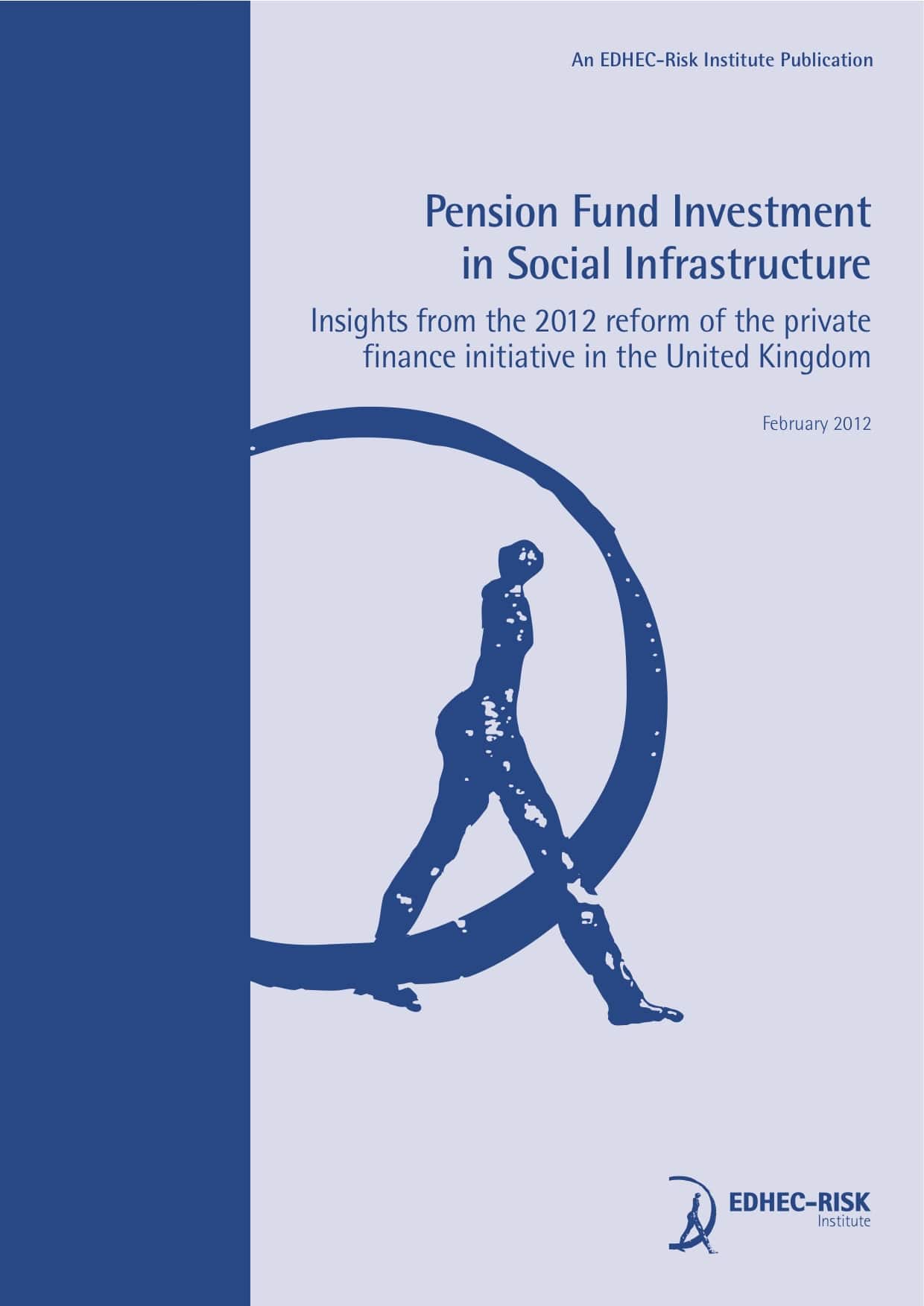EDHECinfra Paper
Pension fund investment in social infrastructure: insights from the 2012 reform of the Private Finance Initiative
In February 2012, EDHECinfra responded to the UK Treasury’s Call for Evidence about the reform of the Private Finance Initiative (PFI) with a particular reference to the opportunity for pension funds to invest in infrastructure assets. In this publication, we extend our response to the issues relating to pension fund investment in social infrastructure. Social infrastructure investments have by design the characteristics that pension funds find attractive in a liability-driven investment context: long-term contracts with steady and predictable inflation- linked income, high operating margins and high risk-adjusted return. Social infrastructure also corresponds to the bulk of the assets procured under PFI.

